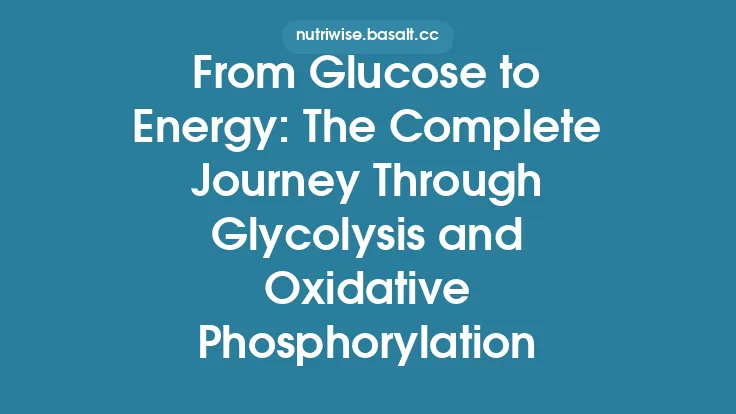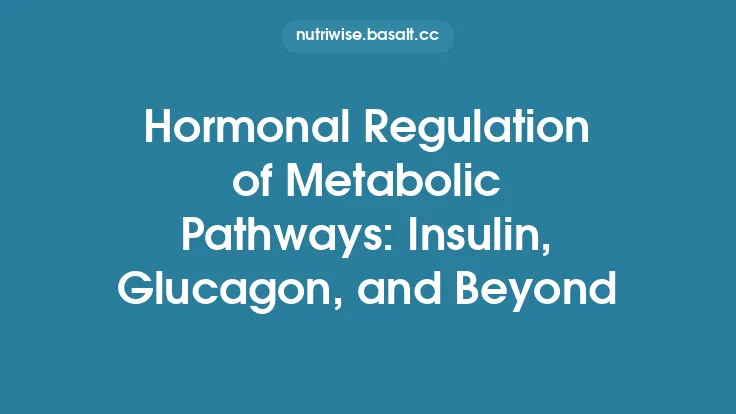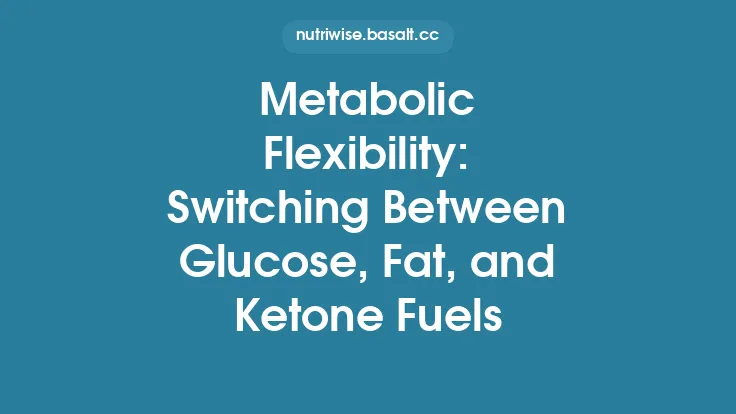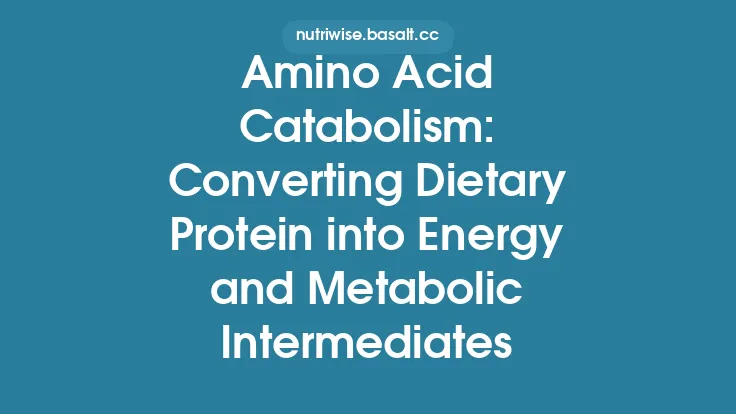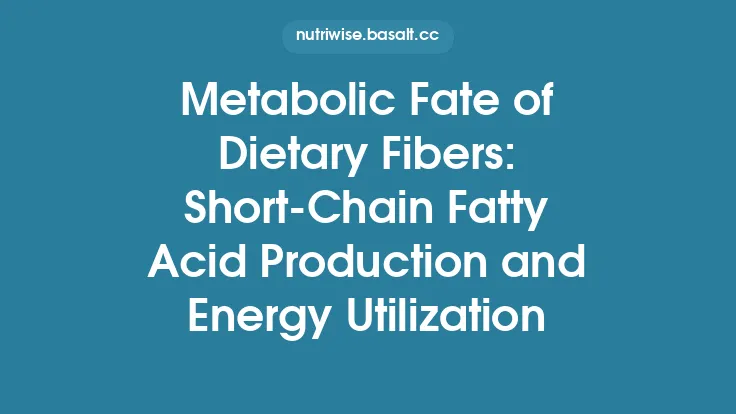Glucose is the quintessential fuel molecule for most eukaryotic cells, and its metabolic fate determines how carbon and electrons are distributed throughout the cell. From the moment a glucose molecule enters the cytosol, a cascade of enzymatically controlled steps channels it either toward rapid ATP generation, storage as polymeric glycogen, or the synthesis of a wide array of biomolecules. Understanding these pathways in depth provides a foundation for interpreting normal physiology, metabolic disease, and emerging therapeutic strategies.
Glycolysis: The Cytosolic Breakdown of Glucose
Glycolysis is a ten‑step, ten‑enzyme pathway that converts one molecule of glucose (a six‑carbon sugar) into two molecules of pyruvate (three carbons each). The pathway can be divided into two phases:
- Energy‑investment phase (steps 1–5).
- Hexokinase/Glucokinase phosphorylates glucose to glucose‑6‑phosphate (G6P), trapping it inside the cell and priming it for further metabolism.
- Phosphoglucose isomerase interconverts G6P and fructose‑6‑phosphate (F6P).
- Phosphofructokinase‑1 (PFK‑1) catalyzes the key regulatory, essentially irreversible conversion of F6P to fructose‑1,6‑bisphosphate (F1,6BP), consuming one ATP.
- Aldolase splits F1,6BP into glyceraldehyde‑3‑phosphate (G3P) and dihydroxyacetone phosphate (DHAP); triose phosphate isomerase rapidly equilibrates DHAP and G3P, ensuring that both three‑carbon molecules proceed through the pathway.
- Energy‑generation phase (steps 6–10).
- Glyceraldehyde‑3‑phosphate dehydrogenase (GAPDH) oxidizes G3P, reducing NAD⁺ to NADH and attaching an inorganic phosphate to form 1,3‑bisphosphoglycerate (1,3BPG).
- Phosphoglycerate kinase transfers a phosphate from 1,3BPG to ADP, producing ATP (substrate‑level phosphorylation) and 3‑phosphoglycerate (3PG).
- Phosphoglycerate mutase rearranges 3PG to 2‑phosphoglycerate (2PG).
- Enolase dehydrates 2PG to phosphoenolpyruvate (PEP).
- Pyruvate kinase catalyzes the final, highly exergonic step, converting PEP to pyruvate while generating a second ATP per G3P.
Because each glucose yields two G3P molecules, the net glycolytic ATP gain is 2 ATP (4 produced – 2 invested). Two NADH molecules are also generated, which later feed electrons into the mitochondrial electron transport chain (ETC) under aerobic conditions.
Link Reaction and Mitochondrial Entry: From Pyruvate to Acetyl‑CoA
Once formed, pyruvate faces three possible fates: reduction to lactate, transamination to alanine, or oxidative decarboxylation to acetyl‑CoA. The pyruvate dehydrogenase complex (PDC) catalyzes the latter, a multienzyme assembly that couples three enzymatic activities:
- E1 (pyruvate dehydrogenase) decarboxylates pyruvate, forming a hydroxyethyl‑TPP intermediate and releasing CO₂.
- E2 (dihydrolipoamide acetyltransferase) transfers the acetyl group to coenzyme A, generating acetyl‑CoA and reducing the lipoamide arm.
- E3 (dihydrolipoamide dehydrogenase) reoxidizes the reduced lipoamide, producing NADH in the process.
The reaction is irreversible under physiological conditions and serves as a critical control point linking glycolysis to the tricarboxylic acid (TCA) cycle. Each pyruvate yields 1 NADH, 1 acetyl‑CoA, and 1 CO₂.
The Tricarboxylic Acid Cycle: Central Hub of Carbon Oxidation
Acetyl‑CoA enters the mitochondrial matrix and condenses with oxaloacetate (OAA) to form citrate, catalyzed by citrate synthase. The TCA cycle then proceeds through a series of eight enzymatic steps, each contributing to the oxidation of the two‑carbon acetyl unit and the regeneration of OAA:
| Step | Enzyme | Key Transformation | Reducing Equivalents |
|---|---|---|---|
| 1 | Citrate synthase | Acetyl‑CoA + OAA → Citrate | – |
| 2 | Aconitase | Citrate ↔ Isocitrate | – |
| 3 | Isocitrate dehydrogenase | Isocitrate → α‑Ketoglutarate + CO₂ | NADH |
| 4 | α‑Ketoglutarate dehydrogenase | α‑KG → Succinyl‑CoA + CO₂ | NADH |
| 5 | Succinyl‑CoA synthetase | Succinyl‑CoA ↔ Succinate | GTP (or ATP) |
| 6 | Succinate dehydrogenase | Succinate → Fumarate | FADH₂ |
| 7 | Fumarase | Fumarate ↔ Malate | – |
| 8 | Malate dehydrogenase | Malate → OAA | NADH |
Per acetyl‑CoA, the cycle yields 3 NADH, 1 FADH₂, and 1 GTP (or ATP). The NADH and FADH₂ generated are the primary electron donors for the ETC, while the GTP can be directly phosphorylated to ATP via nucleoside diphosphate kinase.
Electron Transport Chain and Oxidative Phosphorylation: Harnessing Reducing Power
The inner mitochondrial membrane houses four multi‑subunit complexes (I–IV) and the mobile carriers ubiquinone (CoQ) and cytochrome c. Electrons from NADH enter at Complex I (NADH:ubiquinone oxidoreductase), while those from FADH₂ feed directly into Complex II (succinate dehydrogenase). The flow of electrons through the chain drives the translocation of protons from the matrix to the intermembrane space, establishing an electrochemical gradient (Δp).
- Complex I pumps 4 protons per NADH.
- Complex III (cytochrome bc₁ complex) pumps 4 protons per electron pair.
- Complex IV (cytochrome c oxidase) pumps 2 protons per electron pair and reduces O₂ to H₂O.
The resulting proton motive force powers ATP synthase (Complex V), which synthesizes ATP from ADP and inorganic phosphate as protons flow back into the matrix. The stoichiometry of proton pumping and ATP synthesis is tightly regulated, ensuring efficient conversion of the reducing equivalents derived from glucose into usable chemical energy.
Alternative Fates of Glucose: Storage and Biosynthesis
While the oxidative pathway described above maximizes ATP yield, cells also divert glucose carbon into non‑energy‑producing routes:
- Glycogen Synthesis (Glycogenesis).
- UDP‑glucose pyrophosphorylase converts glucose‑1‑phosphate (derived from G6P by phosphoglucomutase) to UDP‑glucose.
- Glycogen synthase adds UDP‑glucose to the non‑reducing ends of glycogen chains, forming α‑1,4‑glycosidic bonds.
- Branching enzyme introduces α‑1,6 branches, increasing solubility and accessibility.
- Pentose Phosphate Pathway (see below).
- Hexosamine Biosynthetic Pathway (see below).
- De Novo Lipogenesis.
- Cytosolic acetyl‑CoA carboxylase (ACC) converts acetyl‑CoA to malonyl‑CoA, the committed step in fatty acid synthesis.
- Fatty acid synthase (FAS) iteratively condenses malonyl‑CoA units, using NADPH (primarily from the pentose phosphate pathway) to reduce the growing acyl chain.
- Amino Acid Synthesis.
- Intermediates such as 3‑phosphoglycerate give rise to serine, glycine, and cysteine.
- α‑Ketoglutarate serves as a precursor for glutamate, glutamine, proline, and arginine.
These anabolic routes are essential for cell growth, membrane biogenesis, and signaling molecule production, illustrating glucose’s role far beyond mere fuel.
Pentose Phosphate Pathway: Generating NADPH and Ribose‑5‑Phosphate
The oxidative branch of the pentose phosphate pathway (PPP) diverges from G6P and fulfills two critical cellular needs:
- NADPH Production.
- Glucose‑6‑phosphate dehydrogenase (G6PD) oxidizes G6P to 6‑phosphoglucono‑δ‑lactone, reducing NADP⁺ to NADPH.
- 6‑Phosphogluconate dehydrogenase further oxidizes 6‑phosphogluconate to ribulose‑5‑phosphate, generating a second NADPH.
- Ribose‑5‑Phosphate Synthesis.
- Ribulose‑5‑phosphate isomerase converts ribulose‑5‑P to ribose‑5‑P, the backbone for nucleotide and nucleic acid synthesis.
The non‑oxidative branch interconverts pentose phosphates with glycolytic intermediates (e.g., fructose‑6‑phosphate, glyceraldehyde‑3‑phosphate) via transketolase and transaldolase, allowing flexible routing of carbon depending on cellular demands for NADPH versus ribose‑5‑P.
Hexosamine Biosynthetic Pathway and O‑GlcNAcylation
A smaller fraction of fructose‑6‑phosphate is shunted into the hexosamine biosynthetic pathway (HBP), culminating in the production of UDP‑N‑acetylglucosamine (UDP‑GlcNAc). The pathway proceeds as follows:
- Glutamine:fructose‑6‑phosphate amidotransferase (GFAT) transfers an amine from glutamine to F6P, forming glucosamine‑6‑phosphate.
- Subsequent acetylation, isomerization, and uridylation steps generate UDP‑GlcNAc.
UDP‑GlcNAc serves as the donor substrate for O‑GlcNAc transferase (OGT), which attaches a single N‑acetylglucosamine moiety to serine/threonine residues on nuclear, cytoplasmic, and mitochondrial proteins. This dynamic post‑translational modification (O‑GlcNAcylation) modulates protein function, stability, and protein‑protein interactions, linking nutrient availability directly to signaling networks.
Regulatory Mechanisms Within Glucose Metabolism
Glucose catabolism is tightly controlled at multiple levels to match supply with demand:
- Allosteric Regulation.
- PFK‑1 is activated by AMP and fructose‑2,6‑bisphosphate, and inhibited by ATP and citrate, providing rapid feedback based on cellular energy status.
- Pyruvate kinase (PK) is allosterically stimulated by fructose‑1,6‑bisphosphate (feed‑forward) and inhibited by ATP and alanine.
- Covalent Modification.
- Phosphorylation of PFK‑2/FBPase‑2 (a bifunctional enzyme) toggles the production of fructose‑2,6‑bisphosphate, indirectly influencing PFK‑1 activity.
- Acetylation of glycolytic enzymes (e.g., GAPDH) can alter catalytic efficiency and subcellular localization.
- Substrate Availability.
- Intracellular concentrations of ADP, NAD⁺, and inorganic phosphate directly affect the rates of glycolytic and oxidative steps.
- Compartmentalization.
- The segregation of glycolysis (cytosol) and the TCA cycle/ETC (mitochondrial matrix) allows independent regulation and prevents futile cycles.
These layers of control ensure that glucose metabolism can swiftly adapt to fluctuations in nutrient intake, oxygen tension, and cellular workload without invoking hormonal signaling pathways.
Integration with Other Metabolic Networks
Glucose metabolism does not operate in isolation; its intermediates intersect with several other macronutrient pathways:
- Amino Acid Interconversion.
- 3‑Phosphoglycerate → serine → glycine → one‑carbon units (via folate cycle).
- α‑Ketoglutarate ↔ glutamate ↔ glutamine, linking nitrogen handling to the TCA cycle.
- Lipid Metabolism.
- Cytosolic citrate (exported from mitochondria) is cleaved by ATP‑citrate lyase to generate acetyl‑CoA for fatty acid synthesis.
- Malonyl‑CoA, derived from acetyl‑CoA, inhibits carnitine palmitoyltransferase‑1 (CPT‑1), thereby regulating fatty acid β‑oxidation.
- Nucleotide Biosynthesis.
- Ribose‑5‑P from the PPP feeds into PRPP (phosphoribosyl pyrophosphate) synthesis, a precursor for purine and pyrimidine nucleotides.
- Redox Homeostasis.
- NADPH generated by the PPP fuels glutathione reductase, maintaining the reduced glutathione pool essential for detoxifying reactive oxygen species (ROS).
Through these interconnections, glucose metabolism contributes to the broader macronutrient economy of the cell, supporting growth, repair, and defense.
Clinical Perspectives: Inherited Enzyme Deficiencies and Metabolic Dysregulation
Defects in glucose‑metabolizing enzymes manifest as distinct metabolic disorders, underscoring the pathway’s clinical relevance:
- Glycogen Storage Diseases (GSD).
- Type I (Von Gierke disease) results from glucose‑6‑phosphatase deficiency, causing severe hypoglycemia, lactic acidosis, and hepatomegaly.
- Type V (McArdle disease) stems from muscle‑specific myophosphorylase deficiency, leading to exercise intolerance and rapid fatigue.
- Pyruvate Dehydrogenase Complex Deficiency.
- Impaired conversion of pyruvate to acetyl‑CoA forces reliance on anaerobic glycolysis, producing lactic acidosis and neurodevelopmental deficits.
- G6PD Deficiency.
- Reduced capacity to generate NADPH via the PPP predisposes red blood cells to oxidative damage, precipitating hemolytic crises under oxidative stress.
- Mitochondrial Disorders.
- Mutations in ETC components (e.g., Complex I subunits) diminish oxidative phosphorylation efficiency, leading to multisystemic fatigue, myopathy, and neurodegeneration.
Understanding the biochemical basis of these conditions guides diagnostic strategies (enzyme assays, genetic testing) and informs therapeutic approaches such as dietary modulation, cofactor supplementation (e.g., thiamine for PDH deficiency), and emerging gene‑editing technologies.
Research Frontiers: Metabolomics, Flux Analysis, and Therapeutic Targeting
Advances in analytical chemistry and systems biology are reshaping our grasp of glucose metabolism:
- Stable‑Isotope Tracer Studies.
- ^13C‑labeled glucose infusions combined with mass spectrometry enable quantification of flux through glycolysis, the PPP, and the TCA cycle in vivo, revealing tissue‑specific metabolic preferences.
- Metabolomics Platforms.
- High‑resolution LC‑MS and NMR profiling capture dynamic changes in intracellular metabolite pools, uncovering novel regulatory nodes (e.g., accumulation of oncometabolites like 2‑hydroxyglutarate in certain cancers).
- Allosteric Modulator Development.
- Small molecules that selectively activate or inhibit key glycolytic enzymes (e.g., PFK‑1 activators) are being explored for metabolic disease and cancer therapy, where altered glycolytic flux is a hallmark.
- CRISPR‑Based Metabolic Engineering.
- Precise editing of genes encoding rate‑limiting enzymes (e.g., upregulating G6PD to boost NADPH production) holds promise for enhancing cellular resilience to oxidative stress.
- Integration with Computational Modeling.
- Genome‑scale metabolic models, calibrated with experimental flux data, allow simulation of metabolic responses to genetic or environmental perturbations, supporting rational design of interventions.
These tools collectively deepen our understanding of how glucose is transformed into energy, building blocks, and signaling cues, and they pave the way for targeted strategies to correct metabolic imbalances.
In sum, the journey of a glucose molecule—from its cytosolic breakdown through mitochondrial oxidation, and onward into diverse biosynthetic routes—constitutes a central pillar of cellular physiology. By dissecting each enzymatic step, regulatory mechanism, and cross‑pathway connection, we gain a comprehensive, evergreen perspective on how the body extracts, allocates, and repurposes the carbon and electrons embedded in this simple sugar. This knowledge not only illuminates normal metabolic function but also provides a framework for diagnosing and treating the myriad disorders that arise when any part of this intricate network falters.
